
A research team has introduced a biomimetic hierarchical solar steam generator (HSSG) based on bacterial cellulose (BC) nanocomposites. This innovative HSSG, created through a simplified aerosol-assisted biosynthesis process, offers a sustainable and effective approach to produce clean drinking water.
Water is vital to the survival of life. However, water scarcity has become a major problem in modern society. Today, one-fifth of the world’s population lives in water-deficient areas, especially in areas where there is no electricity.
For people in such areas, access to clean drinking water is often a difficult task. Therefore, they urgently need efficient, low-cost, sustainable, and easily accessible technologies and devices to generate clean water. Solar energy is one of the most abundant and widespread resources on Earth. Solar-powered water purification technology is simple and efficient to obtain clean drinking water from non-drinkable water sources such as lake water, sewage, or seawater.
Today, a team led by Prof. Shu-Hong Yu from the University of Science and Technology of China (USTC) reports an efficient and sustainable biomimetic hierarchical solar steam generator (HSSG) based on bacterial cellulose (BC) nanocomposites. This HSSG is fabricated through a one-step aerosol-assisted biosynthesis process.
The designed microbial synthesis process is successfully combined with the deposition of nanomaterials, and a sophisticated biomimetic hierarchical structure is constructed simply and efficiently. The hierarchical structure of this HSSG contains three continuous layers with different functions, including a light-absorbing layer of carbon nanotubes/BC, a thermal insulation layer of glass bubbles /BC, and a wood substrate for supporting and water transporting.
In HSSG, the three-dimensional (3D) cellulose nanofiber network of BC hydrogel significantly reduced the energy consumption to convert the liquid water into vapor and accelerate the vaporization of water. Owing to the hierarchical structure design and reduced vaporization enthalpy of nanocomposites of HSSG, a high evaporation rate of 2.9 kg (6.4 lb) m-2 h-1 and solar-to-vapor efficiency of 80% can be achieved.
In this HSSG, the hierarchical structure nanocomposites grow on the wood substrate and are tightly combined with the wood substrate through the BC network of nanofibers. BC nanofibers crosslink with the cellulose of wood forming infiltrating layer in wood, which acts as a strong binder between wood and BC nanocomposite layers.
This structure ensures fast water transportation from wood to the BC nanocomposite layers and makes them firmly attached to the wood substrate, which provides the structural foundation of thermal insulation and water transportation. Glass bubbles are microscale hollow glass spheres, which provide the structural foundation of thermal insulation and water transportation.
On the top of the device, the carbon nanotubes and BC nanocomposite layer have a sophisticated interlaced structure where carbon nanotubes and cellulose nanofibers form a double network of nanofibers. In this double-network, carbon nanotubes function as highly effective solar light absorber,s and BC nanofibers are used to transport water and reduce the energy consumption of evaporation.
This multilayered structure of wood, glass bubbles /BC, and carbon nanotubes/BC is designed to achieve fast water transportation, thermal management, effective light absorption, and reduced vaporization energy consumption. Moreover, to systematically investigate the relationship between evaporation rate, energy efficiency, and energy consumption of evaporation, the team provides a novel two-dimension chart with guidelines showing different enthalpy of vaporization. This theoretical analysis method shows potential for analyzing the contributions of different functional parts in solar steam generator devices for evaporation rate.
Compared with other technology of solar-powered water purification, HSSG has great advantages in evaporation rate, energy efficiency, sustainability, and cost, which make it a promising technology for future water purification.
Reference: “Sustainable Wood-Based Hierarchical Solar Steam Generator: A Biomimetic Design with Reduced Vaporization Enthalpy of Water” by Qing-Fang Guan, Zi-Meng Han, Zhang-Chi Ling, Huai-Bin Yang and Shu-Hong Yu, 8 July 2020, Nano Letters.
DOI: 10.1021/acs.nanolett.0c01088



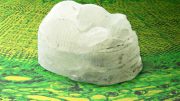
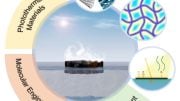
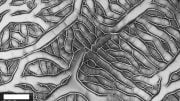
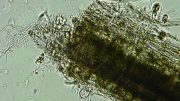
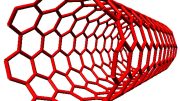
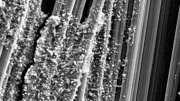
Be the first to comment on "Biosynthetic Sustainable Hierarchical Solar Steam Generator for Water Purification"